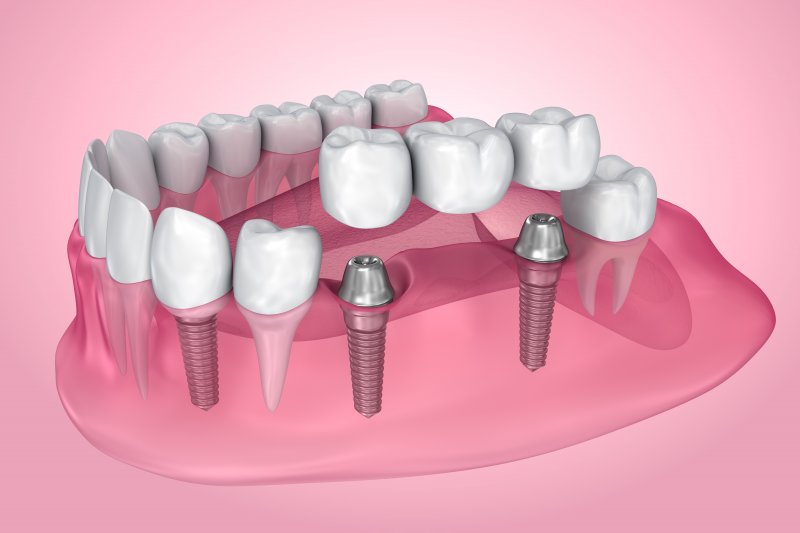
Dental implants are amazing prosthetic devices designed to replace missing teeth while providing a realistic appearance, a comfortable fit, and maximum chewing power. However, you may encounter a few terms you are not familiar with during the implant placement process. Here’s a brief overview of a few common terms to help you better understand the procedure.
Osseointegration
Titanium is a remarkable metal known for its incredible strength and relatively light weight, and it is commonly used in prosthetic devices due to its ability to fuse with living bone structure. A titanium post serves as the anchor piece of a dental implant, and it will gradually fuse with the jawbone after it is placed. This process, called osseointegration, gives dental implants the sturdy foundation they need to restore almost all the patient’s natural chewing power and last for a lifetime if they receive proper care.
Abutment
After the titanium post of your dental implant is surgically placed, it will need several months to fuse with your jawbone. After this healing period is over, you’ll be scheduled for a minor surgical procedure to place an abutment piece. The abutment piece will connect the titanium post to a lifelike restoration such as a denture, dental crown, or bridge, and it serves a crucial role in ensuring that your new tooth or teeth can chew effectively.
Ceramic
Ceramic materials such as porcelain are commonly used to craft the restorations mounted on dental implants. Ceramics are made from clay tempered with extreme heat, resulting in a lustrous and durable material that mimics the appearance and function of natural dental enamel. This makes them ideal for the lifelike dental restorations mounted on dental implants.
Zirconia
Some people are allergic to titanium, which makes placing implants made from that material quite risky. Luckily, implants can also be made from zirconia, a metal-free substance that reduces the risk of bacterial growth. Zirconia also imitates the white color of natural dental enamel, which can help the restoration maintain a lifelike appearance.
Knowing a few dental implant terms can take a lot of stress out of the placement process. Consulting with your dentist can help you find out if implants can be a great solution for your tooth loss.
About the Author
Dr. Andrew Betaharon earned his dental degree at the University of Maryland School of Dentistry and completed his General Practice Residency at the Veterans Affairs Hospital in Long Beach. He is proud to serve as a member of the American Dental Association and the Maryland State Dental Association. His office in La Plata offers general, restorative, cosmetic, and emergency dentistry as well as dental implant services. To learn more about the dental implant process, contact his practice online or dial (240) 349-2439.
 La
Plata
La
Plata